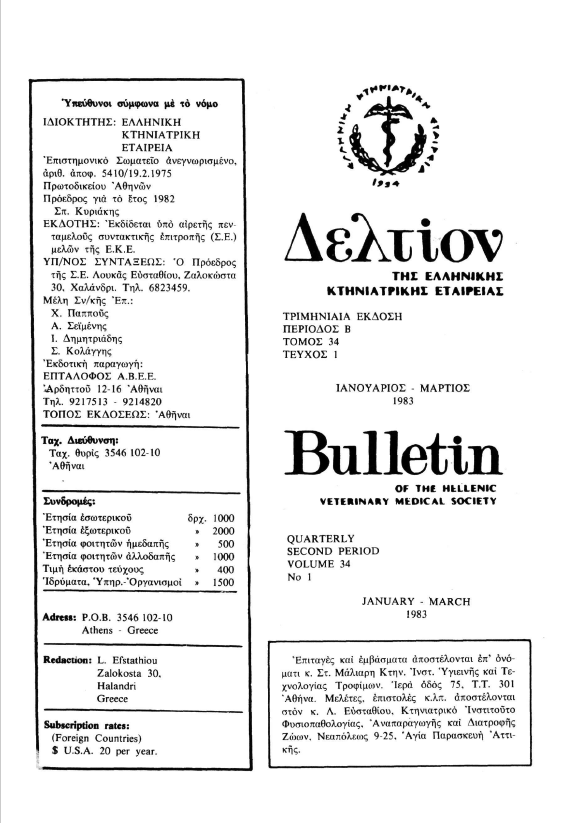Recent trends in foodborne diseases of bacterial origin
Abstract
Although foodborne and waterborne diseases are considered a major group of human illnesses, international statistics do not reflect the true incidence of food poisonings due to extensive underreporting. Even in developed nations it is estimated that there are 25 true cases for each ο ne reported. Losses to the national economies are of significant magnitude to cause concern. Medical costs for salmonellosis alone in the USA are estimated to be in excess of 1.2 billion dollars/ year. Recent epidemiologic data indicate that outbreaks of bacterial origin remain the most frequent type, with Salmonella, S. aureus, C. perfringens and V. parahaemolyticus the most common agents. A significant percentage of the outbreaks remains of unknown etiology. These unknown agents may include viruses and foodborne disease agents which were overlooked before in foods. Foods of animal origin remain the major group of implicated foods while restaurants and homes are the most common places of food mishandlings. Inadequate cooling has been associated with most outbreaks. Worldwide, the incidence of food poisoning is expected to increase. Major contributing factors include: more out of home and mass feedings; more centralized mass production and wider distribution of foods exposing larger segments of the population; increased consumption of slightly heated foods; rapid expansion of tourism on an individual or group basis resulting in overloading the capacity of food service establishments; increased consumer awareness; better reporting of foodborne diseases; introduction of new technology where no tradition of good manufacturing practices exists; and expansion of international trade. Extensive progress has been made in understanding the ecology and epidemiology of bacterial food poisoning agents during the past ten years. Disease agents such as Campylobacter, Y. enterocolyttca and B. cereus have been recognized and studied extensively. The pathogenesis of diarrheas caused by many bacterial agents has just begun to be understood and new avenues of treatment or prevention may become possible in the near future. Although the food industry has made extensive progress in recent years, the need to change the manufacturing of many foods from an art to science has become acute. Rapid introduction of new food processing technologies quite often is not followed by the rapid and clear understanding of their food safety implications. With some old preservation methods we still have problems because we do not follow well known and recommended procedures. Political and consumer pressures upon regulatory agencies sometimes are irrational and not well formulated with respect to the risk they would like to prevent. The debate on nitrites, nitrosamines and botulism is a recent example. This presentation will be limited to a discussion of some recent developments regarding major and newly recognized bacterial agents. Appropriate references for further reading will be recommended.
Article Details
- How to Cite
-
ΓΕΝΗΠΩΡΓΗΣ Κ. (2019). Recent trends in foodborne diseases of bacterial origin. Journal of the Hellenic Veterinary Medical Society, 34(1), 56–58. https://doi.org/10.12681/jhvms.21573
- Issue
- Vol. 34 No. 1 (1983)
- Section
- Articles

This work is licensed under a Creative Commons Attribution-NonCommercial 4.0 International License.
Authors who publish with this journal agree to the following terms:
· Authors retain copyright and grant the journal right of first publication with the work simultaneously licensed under a Creative Commons Attribution Non-Commercial License that allows others to share the work with an acknowledgement of the work's authorship and initial publication in this journal.
· Authors are able to enter into separate, additional contractual arrangements for the non-exclusive distribution of the journal's published version of the work (e.g. post it to an institutional repository or publish it in a book), with an acknowledgement of its initial publication in this journal.
· Authors are permitted and encouraged to post their work online (preferably in institutional repositories or on their website) prior to and during the submission process, as it can lead to productive exchanges, as well as earlier and greater citation of published work.



